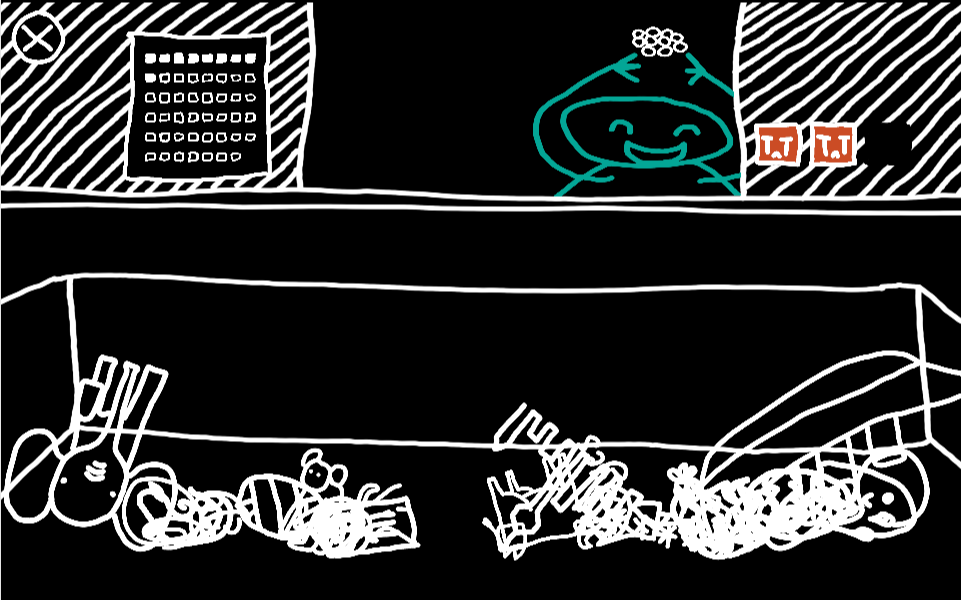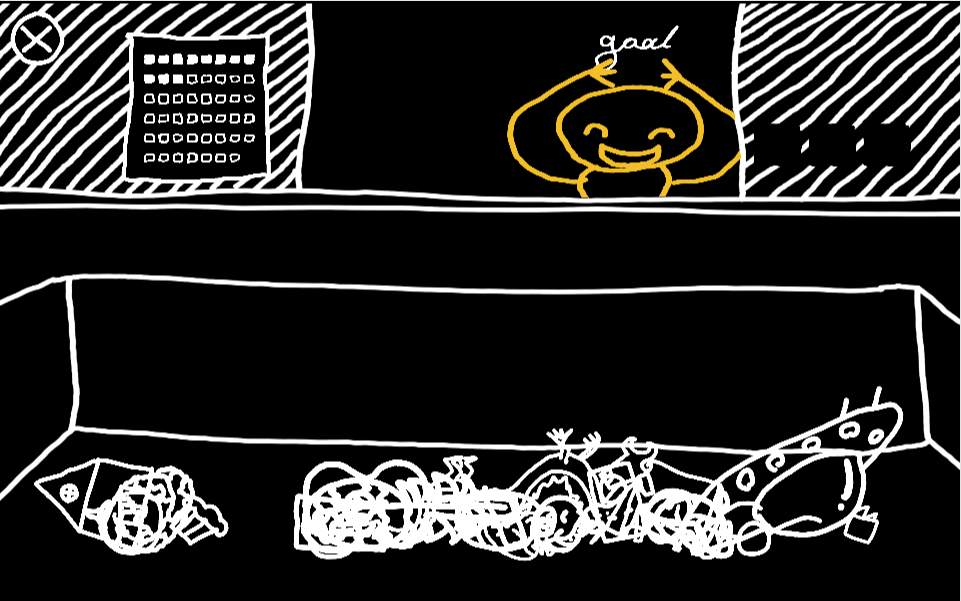A fun idea marred by bugs.
Everyone loses things – it’s human nature. But finding them again sometimes requires a little help. In Have You Seen My…, by Yasaman Far, your goal is to sort through a confusing jumble of items to find a requested item. Created in 48 hours for a game jam , the game is novel but challenging to justify spending any extended time with. It’s engaging enough for a few repeated plays, but eventually it seems to get too glitchy to continue, a jumble of squiggly lines designed to frustrate.
The action is fairly simple: a mess of items drops into an enclosed area, and charmingly drawn patrons appear, requesting something they’ve lost. These could be anything ranging from their tears (!), their dreams (!!), or a UFO(!!!).
You sift through the mess–and the monochromatic squiggles are a mess–to find the item and return it to the poor soul.

Different strategies can help you overcome the heap of littered items. One approach we tried was continually organizing items as they dropped from the sky, sorting them into theme, while predicting which items may be requested.
Certain items stand out: It’s impossible to miss the dragon’s tail and you can search, by sound, for the strum of the guitar as you click through. But other items are sized in ways we wouldn’t expect, with a goat and a cow appearing roughly the same size, and, in relation to the guitar, they’re nowhere near as prominent.
How do you lose a goat anyways?
The simplistic art-style works effectively here. The bouncy pile of goods, replete with curvy lines and apt sound effects, feels overwhelming at first, but becomes manageable as you learn what the game expects and the various shapes and words it’ll throw at you. Simplicity betrays a deeper game here.
The game operates on a three strike system. Find the patron’s lost item before they storm off and you keep going; fail to provide it and you get a strike. Unfortunately, in the midst of all the debris, each item requested doesn’t seem to be present in the jumble at all, creating a situation that feels patently unfair.

After failing in two separate rounds where seemingly no items matched we grew frustrated, but this wasn’t a deal-breaker, as the reward for identifying patterns where you shouldn’t is a positive feeling, a reminder of humanity’s penchant for identifying patterns.
The deal-breaker came in the form of a game-ending bug, however, as the patron simply didn’t show up to seek any items, forcing us out of the game.
This is the type of game that shows it was made in short order: It does just enough right to leave us wanting more but suffers from enough issues we’re not sure if we’ll return. Still, if you love a game that will stimulate your brain, if even for a few minutes, this one is worth a look.
–with files from Evan McIntosh
